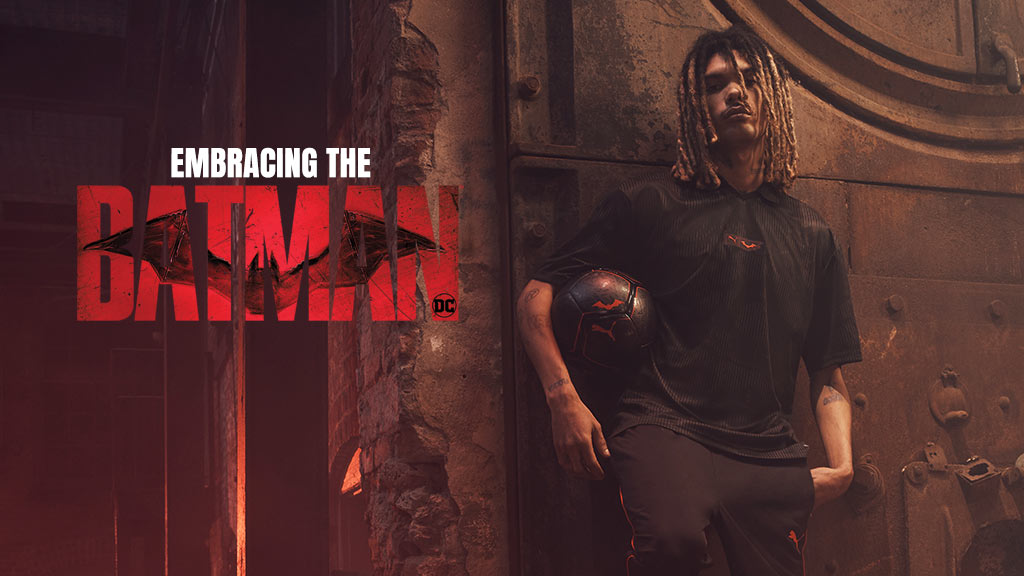
It’s become a rite of passage for every generation: to have “your” Batman. Every decade or so, the legendary figure with a rich history rooted in the pages of Detective Comics gets reimagined for the big screen in a way that is reflective of the times: familiar, yet different.
Since the release of Tim Burton’s Batman (1989), the cape and cowl worn by the World’s Greatest Detective have been passed down from Michael Keaton to Val Kilmer, George Clooney, Christian Bale, and Ben Affleck. Now, Robert Pattinson is the latest performer to embrace the darkness in the duality of Bruce Wayne/Batman, sparking renewed interest in and excitement for a character that is a true cultural icon. Filmmaker Matt Reeves’ The Batman (2022) is connecting with audiences, and it’s supported by one of this year’s most exciting — and extensive — licensing programs that is turning the Gotham City vibe into a full-blown lifestyle.
“Batman is one of our biggest and most enduring DC franchises, so we identify partners and build programs that will engage our fans in new and bold ways that directly complement the creative of the content,” says Robert Oberschelp, senior vice president of franchise management and marketing and global brand product at Warner Bros. Consumer Products. “Specific to The Batman, we knew, given the film’s visual style, an apparel and lifestyle program would resonate strongly with the film’s more grown-up audience.”
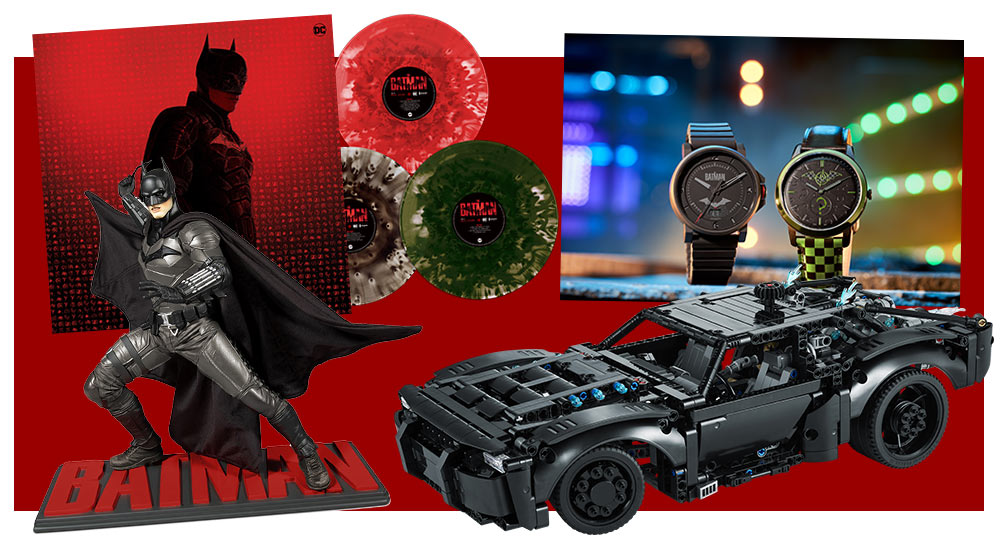
THE RIDDLE OF BALANCE BETWEEN AUDIENCE, BUSINESS, AND ART
Licensing is a nuanced business and companies must delicately do a complex dance between art and commerce to meet fans’ insatiable appetites for new products that range from bold statements to subtle accents across multiple categories. But it’s what happened 30 years ago that laid the foundation for multiple Batmen to co-exist at the same time in print, on screen, and in merch — and for the doors of the Batcave to blast open for the adult tastes of today.
“I believe Batman changed licensing,” says Michael Uslan, executive producer of The Batman, and author of the new book Batman’s Batman: A Memoir from Hollywood, Land of Bilk and Money. Uslan, who bought the film and ancillary rights to Batman in the late 1970s, has served as a producer on every Batman film since 1989 and has been there to see the merchandising evolve. “For the first film, there was a licensing program playing off of the likenesses of the cast, including Michael Keaton, but there was also a generic line developed featuring artwork from the comics,” Uslan says.
Tim Burton’s Batman elevated cross-category licensing opportunities in a way that perhaps only Star Wars had matched a decade prior. Apparel, cereal, jewelry, fast food premiums, and — as The Joker would say — “those wonderful toys.” But there were questions as to what was allowed to overlap between “comic Batman” and “film Batman” in licensing that led to debates over the color of Batman’s suit and accessories when manufacturers translated them into toys and collectibles. With those problems ironed out during the licensing for Batman Returns (1992), the seeds were planted for a world where print and screen feed off of each other and fuel consumer interest in tandem.
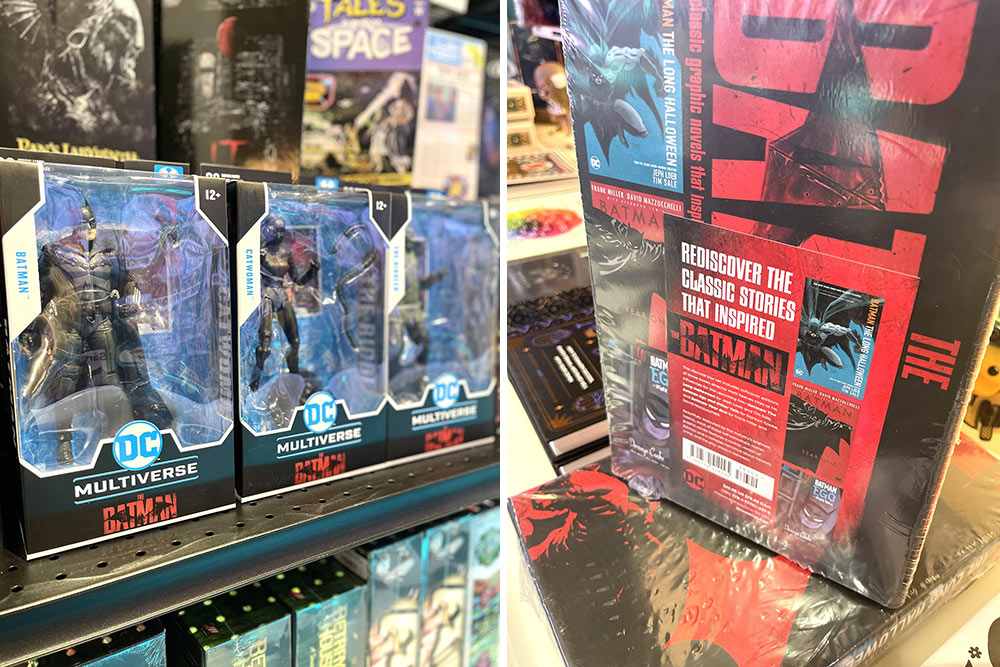
At Revenge Of Comics & Pinball in Los Angeles, the cyclical nature of comics and film is on display this year as fans seek out the stories that inspired The Batman — such as The Long Halloween and Batman: Year One — and collectibles based on The Batman.
“People are loving the new movie. We have definitely seen an uptick in interest for all things related to the Caped Crusader,” says Revenge Of Co-Founder Jeff Eyser. “We have some awesome action figures from McFarlane Toys that we recently had to restock. The Riddler is certainly my favorite of the series, but we just got in the Catwoman figures and those are amazing.”
One item from McFarlane Toys’ The Batman range is a 12-inch Red & Black figure, which features a non-movie-specific suit. This figure is a perfect example of how the worlds of Batman licensing are now able to overlap and collide thanks to Kenner fighting to make other non-movie-specific suits (see: “Tec-Shield Batman” and “Deep-Dive Batman”) back in 1992. And now, the licensing efforts extend far beyond the limits of the toy aisles.
To best support the new film, Warner Bros. has taken a thoughtful approach to striking deals that make sense for all parties while keeping its focus on the fans.
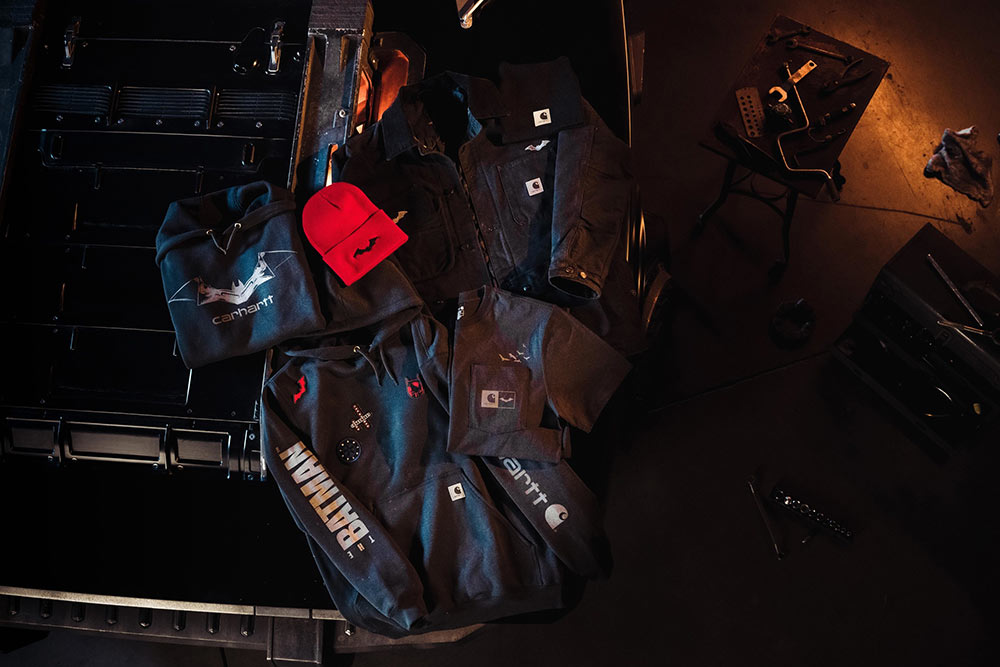
“The balance comes from having incredible partnerships with key licensees and retailers, a great creative team in our division, as well as having our fans top of mind in everything we do — how, when, and where do they want to engage with their favorite characters,” Oberschelp says. “We engage them with a widely available and robust program around tentpole films, but we also know fans love collabs and limited collections like those we did with Carhartt.”
In The Batman, Bruce Wayne isn’t afraid to get his hands dirty, whether it be fighting crime or building a Batmobile. Carhartt infused that maker spirit into a limited-edition workwear collection for those who work hard day and night.
A GROWN-UP GOTHAM
Pattinson’s take on Bruce Wayne is more rugged and unrefined than past cinematic depictions of the character, but still, there is a sophistication to his developing persona. Similarly, Zoë Kravitz’s Selina Kyle/Catwoman is both scrappy and stylish, earnest and elegant. Their exploits, set against the backdrop of a Gotham cobbled together from elements of New York, London, Pittsburgh, and Chicago, provide contrast to the chaos of Paul Dano’s Riddler — all of which are inspiring some next-level gear.
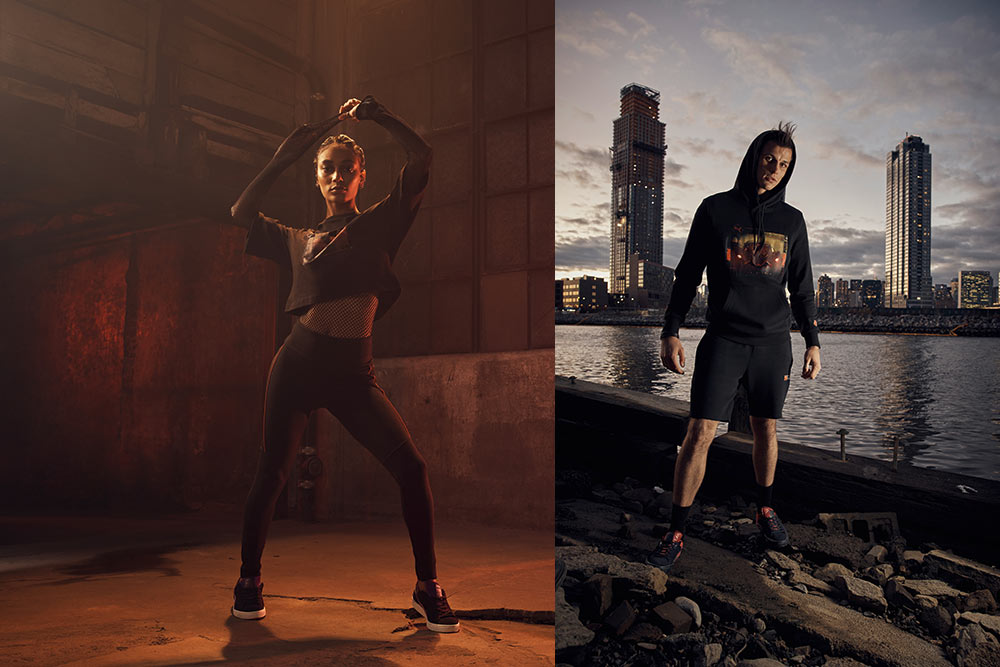
The PUMA x BATMAN collection merges style and grit with culture and sport across footwear, apparel, and accessories designed to be worn from the streets to the court, the field, and beyond.
“High-quality offerings — including Lanvin, Saks Fifth Avenue, Puma, EleVen by Venus Williams, Emilie Heathe, and more — allow fans to immerse themselves in the graphic and unique visuals of Matt Reeves’ Gotham City,” Oberschelp says, noting that kids and adults can still share their fandom. “The collections are edgy, fashionable, and wearable, and the toys are big hits — I mean, have you seen that Batmobile?”
The new Batmobile is a fierce beast that is more akin to a muscle car than the tanks of recent years and the more fantastical vehicles of the past. It’s functional, and it has inspired apparel, toys, and collectibles, with Spin Master, LEGO, Mattel, and Jada Toys all getting in on the high-octane action.
“Fans have grown up with Batman and he’s grown up with them,” Uslan says. “For kids, it’s new; for parents and grandparents, it’s nostalgic. Comics have grown up with their audience and more fans have discovered Batman.”
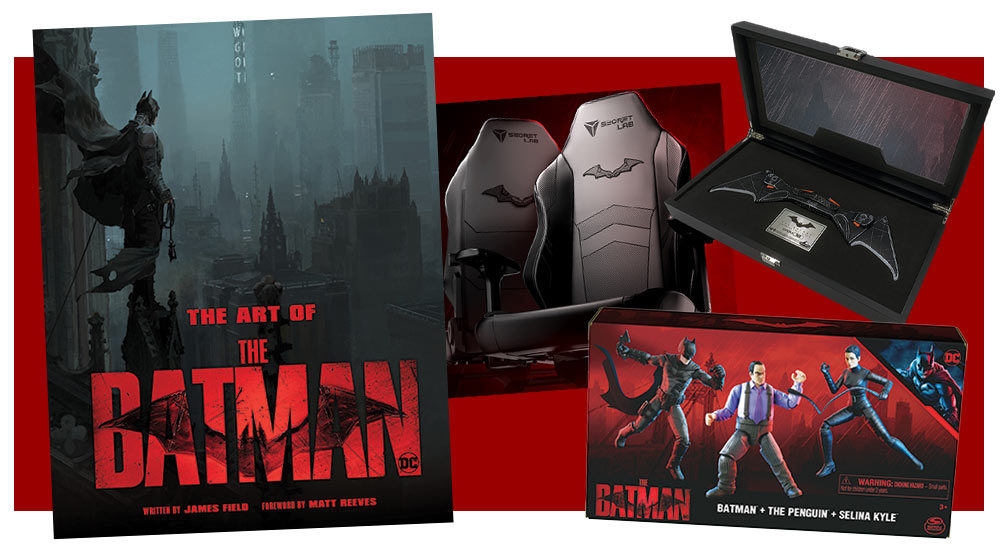
BATMAN … AND BEYOND
Following years of films set in the DC Extended Universe, The Batman seemingly reset the stage for stories yet to come … or did it? With the concept of a multiverse, anything is possible. The Gotham that Pattinson’s Batman inhabits is set to expand in a new series being developed for HBO Max to explore the rise of Colin Farrell’s Penguin alongside corruption in the Gotham City Police Department. And, a theatrical sequel to The Batman was announced last month at CinemaCon with Reeves back in the director’s chair. Additional DC projects for the next year include Black Adam, Shazam! Fury of the Gods, Batgirl, Aquaman and the Lost Kingdom, and The Flash.
“We’ll have products, collabs, and merchandise on a global scale, as well as more themed experiences popping up around the world inspired by the places and characters in the DC Universe,” Oberschelp says. “And there’s no question that offerings in the digital space, like NFTs, are quickly becoming another fan engagement touchpoint. We’re excited about everything in store for DC in the coming months and years — so stay tuned!”
This article was originally published in Issue No. 13 of the Pop Insider. Click here to read the full issue!
